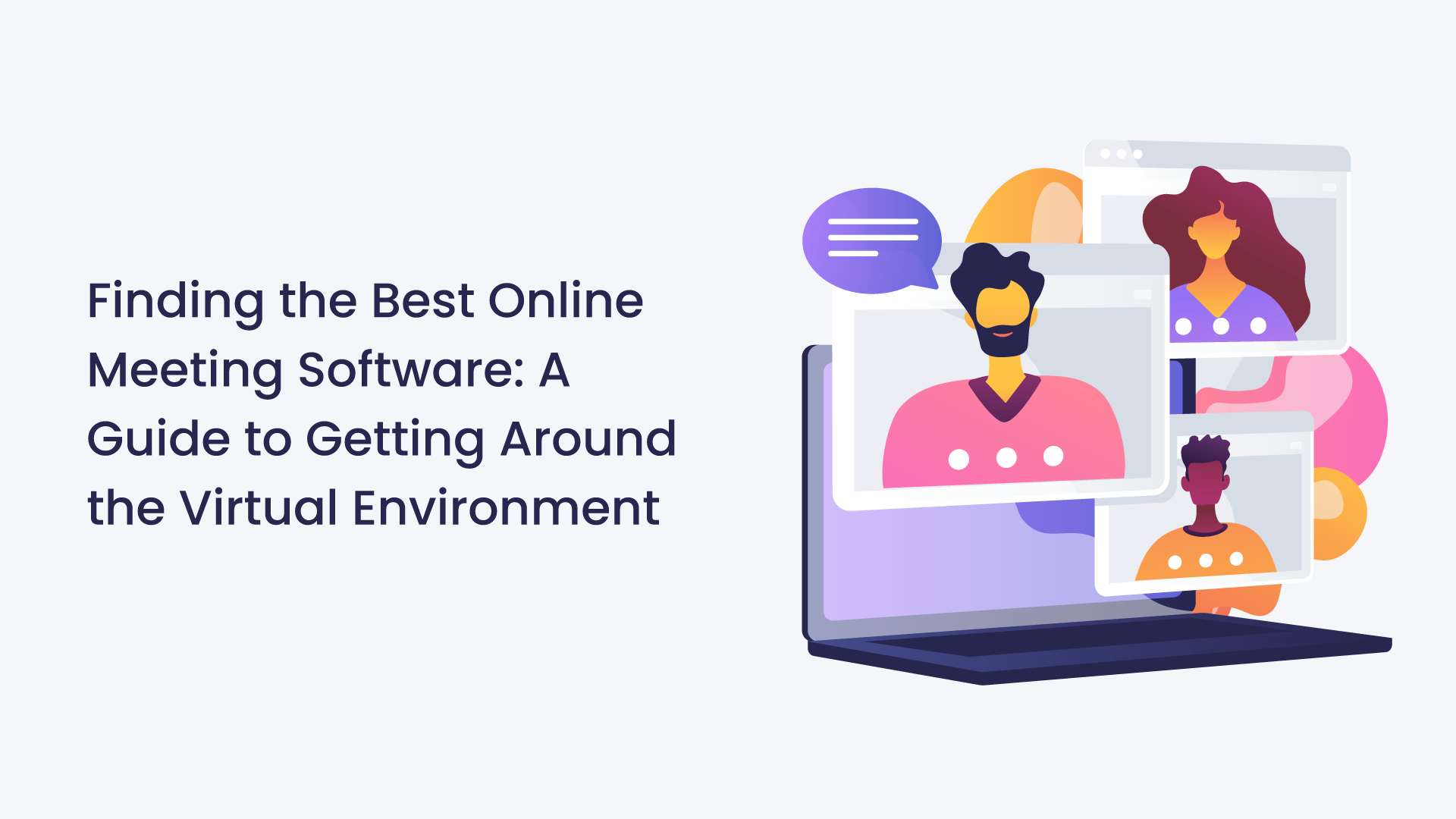Online meetings are now a necessary component of remote work and virtual collaboration in the era of technology. Businesses and individuals are turning to online meeting software to connect, communicate, and cooperate from anywhere in the world as remote teams and worldwide connectivity grow in popularity. However, selecting the best video conferencing software can be challenging given the wide range of solutions on the market. In order to assist you traverse the virtual environment and choose the finest online meeting software for your requirements, this article strives to give you useful insights and considerations.
Evaluate Your ‘Meeting’ Needs
It’s important to evaluate your unique meeting needs before entering into the world of online meeting software. Take into account elements like the number of attendees, the frequency of meetings, the needed functionality, and the tool’s ability to integrate with other tools. Ascertain whether you require simple audio and video conferencing services or more sophisticated ones like screen sharing, recording, and collaboration tools. You can focus on software that meets your needs by reducing your selections and clarifying your meeting criteria.
Take into Account User Experience and Ease of Use
The usability and user experience of online meeting software are important factors. Look for software that has a simple setup process, fluid navigation, and an intuitive user interface. Participants can instantly attend meetings without having to have substantial technical expertise or training thanks to user-friendly software. In order to facilitate seamless meetings across various platforms and operating systems, take into account the availability of mobile apps and cross-platform compatibility. Your staff is more likely to accept and effectively use the programme the more user-friendly it is.
Analyse the Video and Audio Quality
The success of your online meetings can be considerably impacted by the audio and video quality. Look for software that offers high-definition video and stable, clear audio. The whole meeting experience can be improved by features like noise cancellation, echo suppression, and automated gain adjustment. To ensure that participants with different internet connections can join meetings without experiencing any disruptions, take into account bandwidth needs as well. Online meetings must have dependable, high-quality audio and video to be successful and interesting.
Features for Recording and Playback
For a number of purposes, including preserving crucial talks, disseminating meeting summaries, or offering training materials, recording online meetings can be beneficial. Look for software that allows you to simply review and share recorded meetings with attendees who couldn’t attend or for future reference, as well as reliable recording capabilities.
Investigate Tools for Cooperation and Productivity
Collaboration and document exchange are frequent features of online meetings. Think about the software’s productivity and collaboration features. Look for features like real-time editing capabilities, file sharing, screen sharing, and virtual whiteboards. During meetings, these tools can encourage inventiveness, active involvement, and effective teamwork. The presence of these elements can improve teamwork and increase the interaction and productivity of your online meetings.
Features for Security and Privacy
Security and privacy aspects are crucial since online meetings sometimes entail delicate talks and the sharing of sensitive information. Make sure the software for online meetings includes reliable encryption techniques to safeguard data transmission. Look for features like end-to-end encryption, waiting room capabilities, and password-protected meetings. To maintain the security and privacy of your meetings, take compliance with industry norms and regulations into account as well. You may feel secure and have your critical information protected during online meetings by giving security and privacy features top priority.
Combination with Other Platforms and Tools
Take into account how well the online meeting software integrates with your current systems and tools. Enhancing workflow efficiency and streamlining meeting scheduling and follow-ups can be done by integrating messaging platforms, customer relationship management systems, calendar apps, project management software, and calendars seamlessly. To connect with your favourite tools, look for software that offers integration options or APIs. Integrating online meetings with your existing workflows is made possible through integration capabilities, which boosts productivity and saves time.
Scalability and Pricing
To meet your future needs, assess the online meeting software’s scalability. Think about things like the maximum number of participants, staying within time constraints, and document and recording storage space. Examine the software’s subscription options and pricing structure as well. In order to accommodate your budget and provide flexibility as your team or organization expands, look for transparent pricing schemes. You can increase and modify your online meeting capabilities as necessary with a scalable and affordable solution.
User Training and Resources
Take into account the programme provider’s resources, tutorials, and user training materials. Look for platforms that provide thorough documentation, video tutorials, and online training courses to assist users in maximizing the potential of the product. Investing in user education shows a provider’s dedication to client success and can assist your team in getting the most out of the online meeting software.
Reviews and Suggestions from Users
Utilize user testimonials and suggestions to learn more from others who have used the online meeting software. Check out online communities, read reviews on reliable sites, and ask coworkers and professionals in the field for advice. User opinions about the software’s dependability, performance, customer service, and general user happiness might be very useful. To gain a balanced viewpoint and make a wise choice, take into account both good and negative feedback.
Conclusion
Choosing the best online meeting software is essential for successful distant cooperation and communication in the virtual world. You may make an informed choice by analyzing your meeting needs, taking into account ease of use, assessing audio and video quality, investigating collaboration tools, giving security and privacy top priority, looking at integration capabilities, and looking at scalability and price.
To verify your pick, don’t forget to examine customer reviews and ask for recommendations. Armed with the knowledge and principles presented in this book, navigating the virtual environment becomes more manageable. Make informed decisions and realize the full potential of online meetings to boost output and teamwork in your remote working environment.
